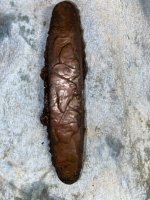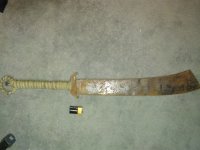oxtail
Newbie
Hello there,
I live in chillicothe, ohio and I want to get a new metal detector for finding relics and coins. I had thought about the garrett ace 250 but I want to be able to use it at the beach in salt water areas also. One of my concerns is that we have iron rich areas around also and want to get as deep down as possible "not sure exactly if iron and discrimination could effect my depth range". The biggest challenge is the areas I am hunting the most which are public parks "lots of pull tabs and foil". I don't know what to look for though since I'm new to this.
Thanks for the help!
D.L.Tennant
Oxtail
I live in chillicothe, ohio and I want to get a new metal detector for finding relics and coins. I had thought about the garrett ace 250 but I want to be able to use it at the beach in salt water areas also. One of my concerns is that we have iron rich areas around also and want to get as deep down as possible "not sure exactly if iron and discrimination could effect my depth range". The biggest challenge is the areas I am hunting the most which are public parks "lots of pull tabs and foil". I don't know what to look for though since I'm new to this.
Thanks for the help!
D.L.Tennant
Oxtail






